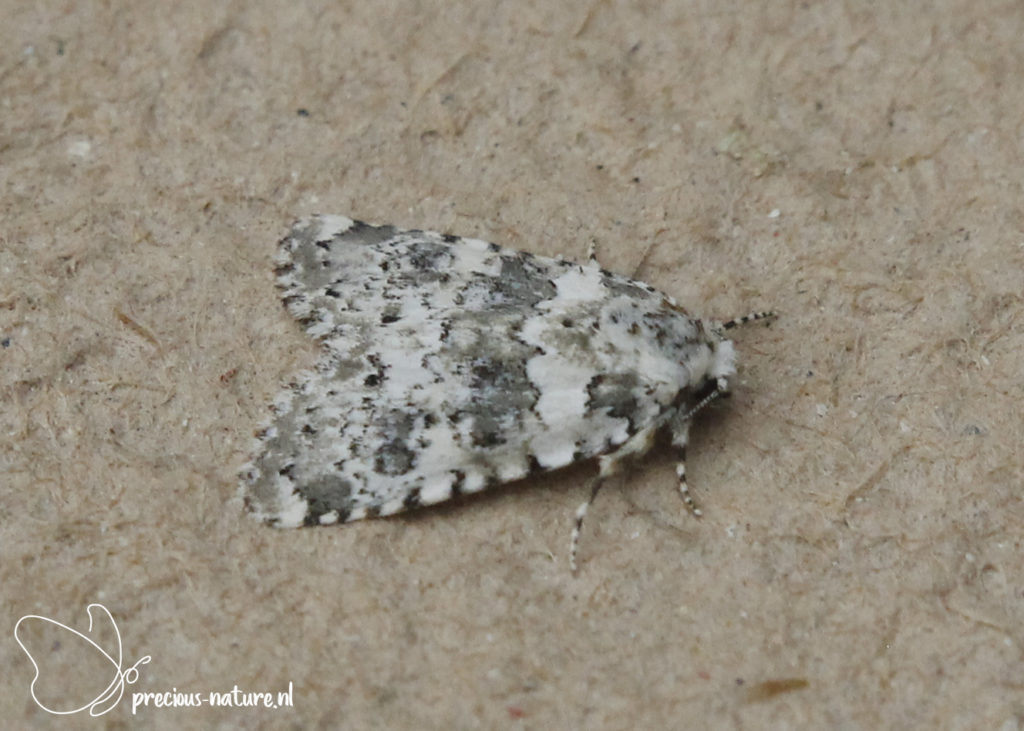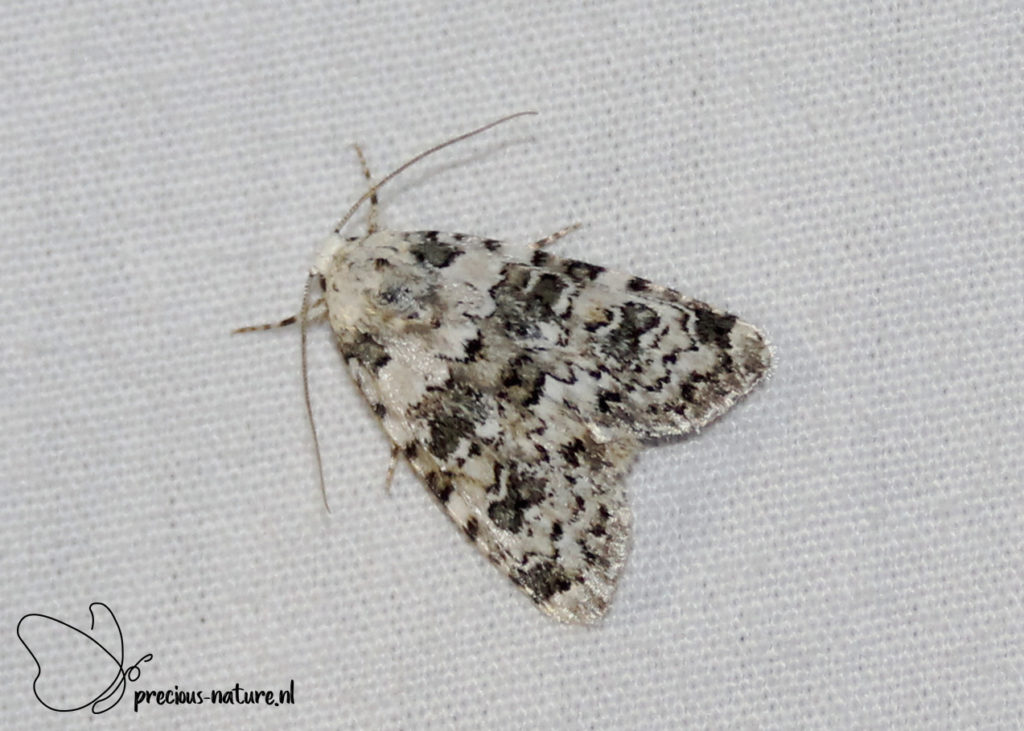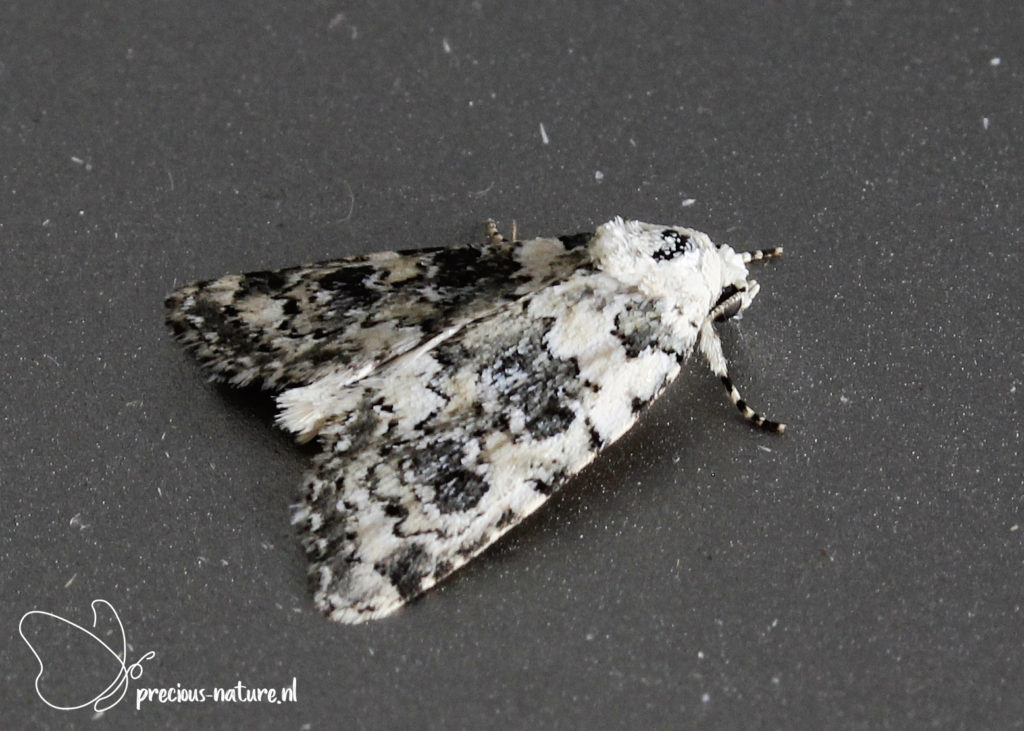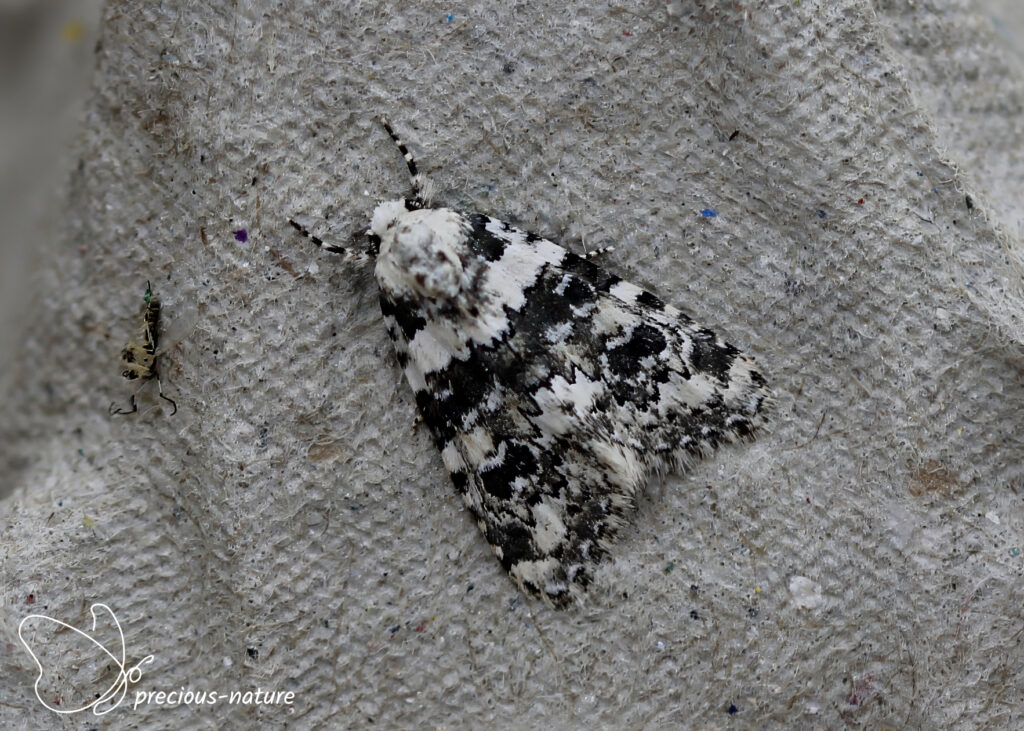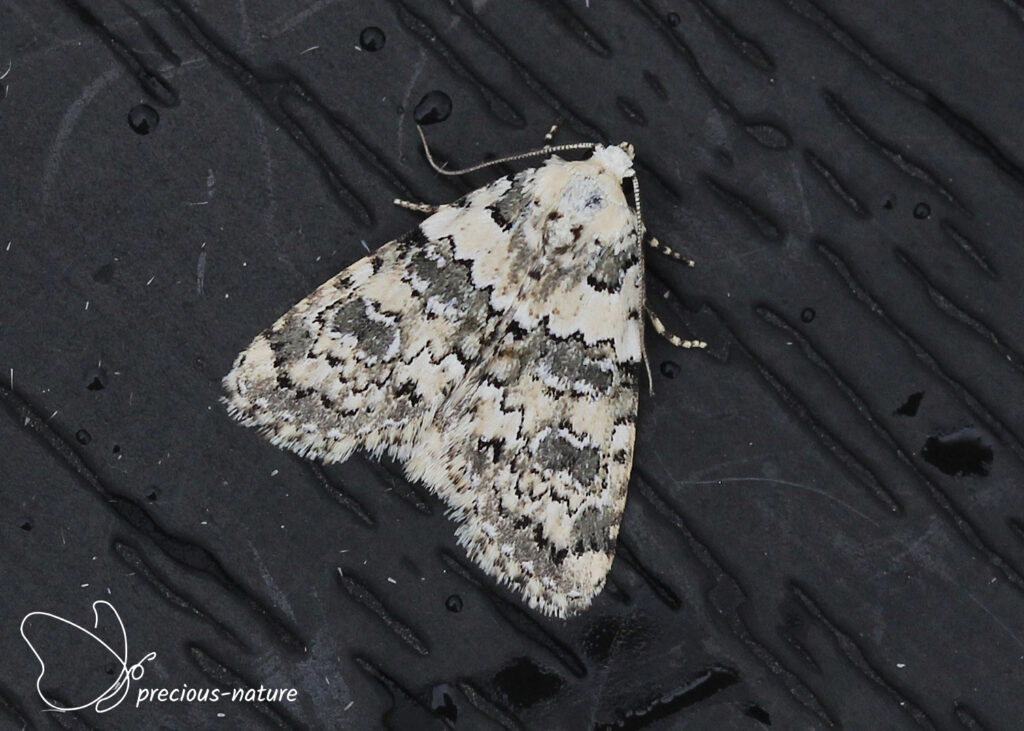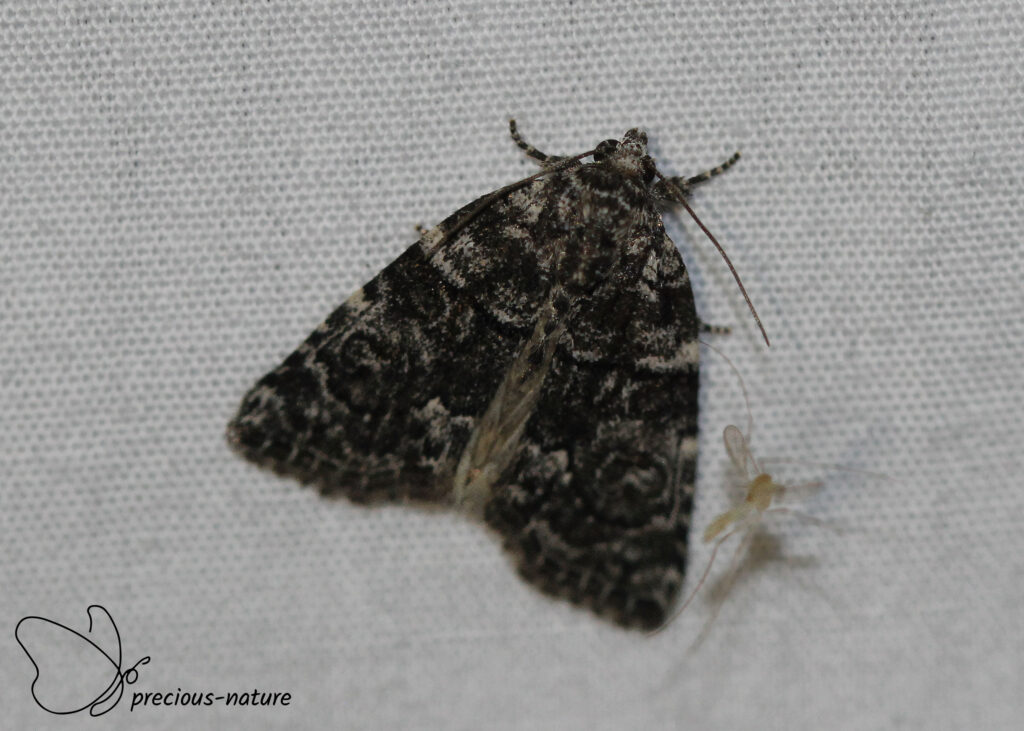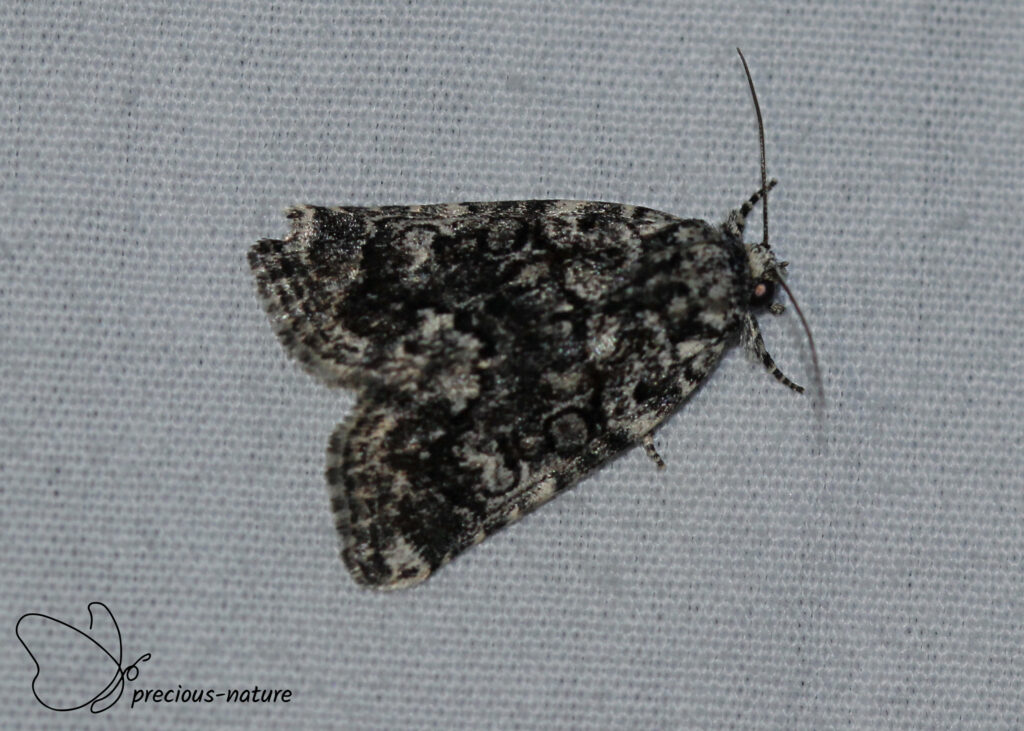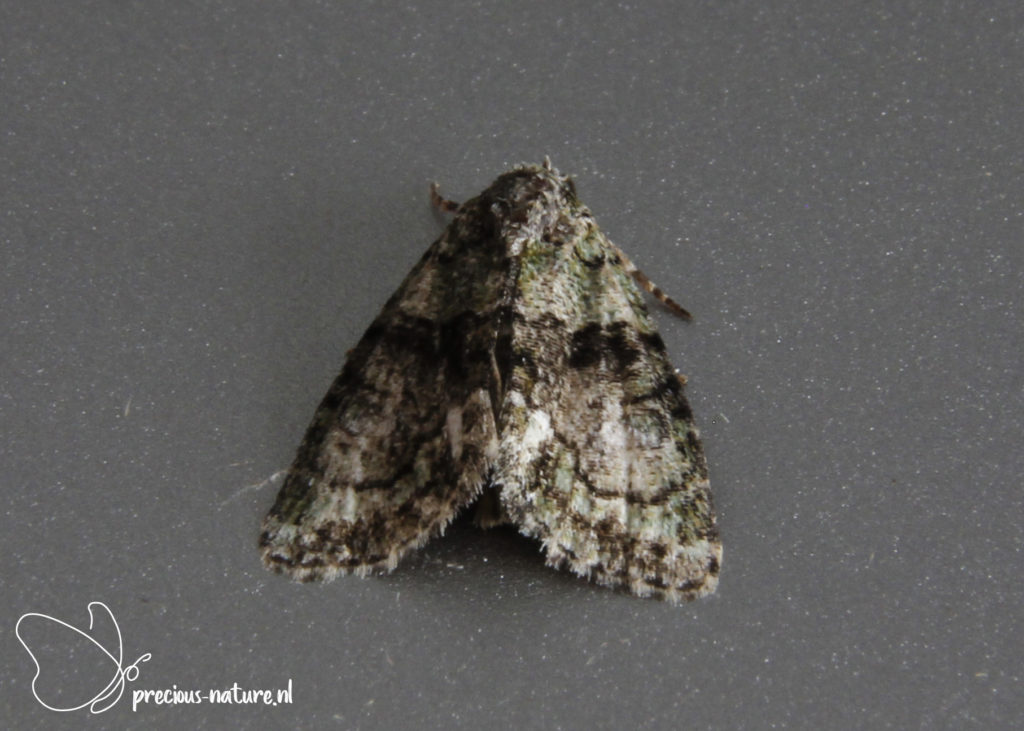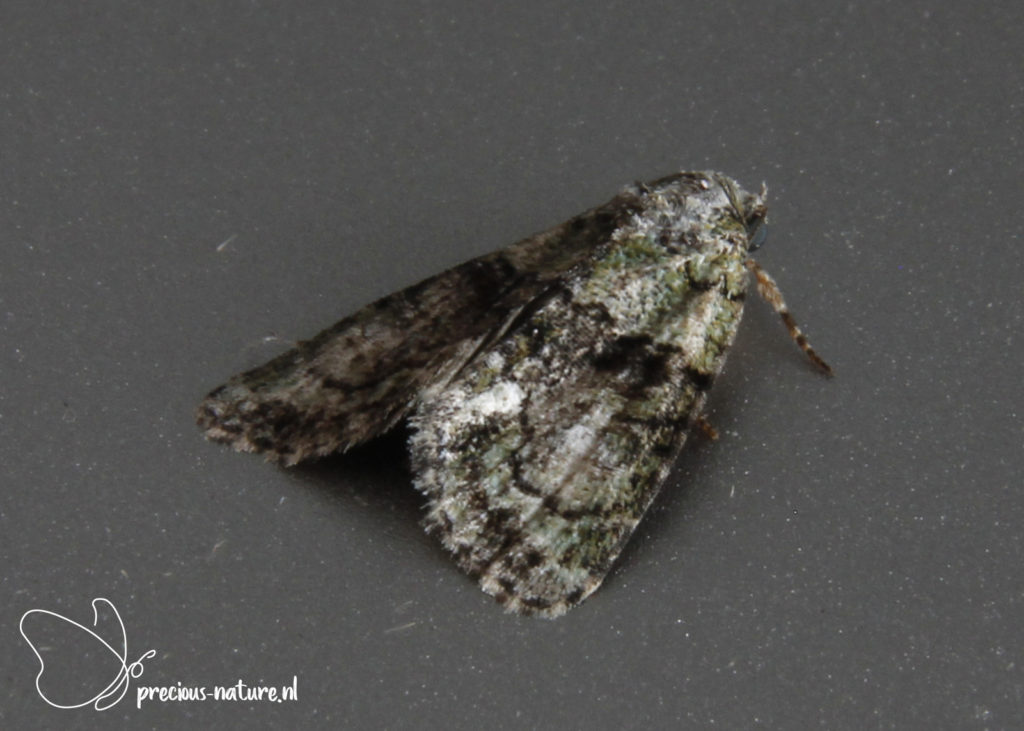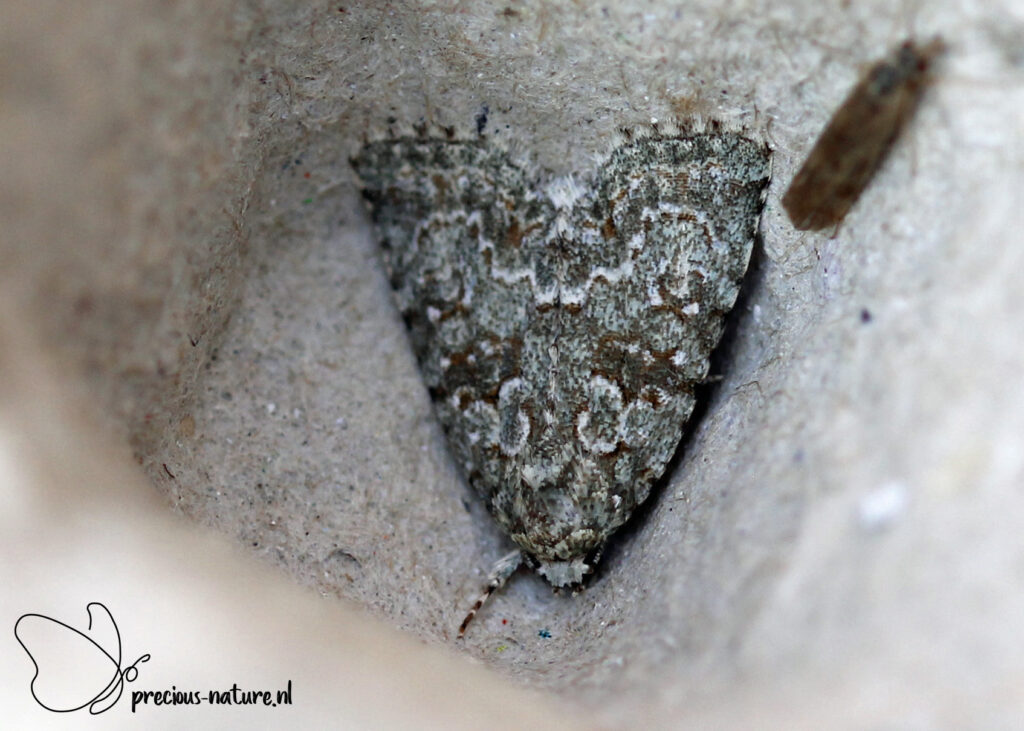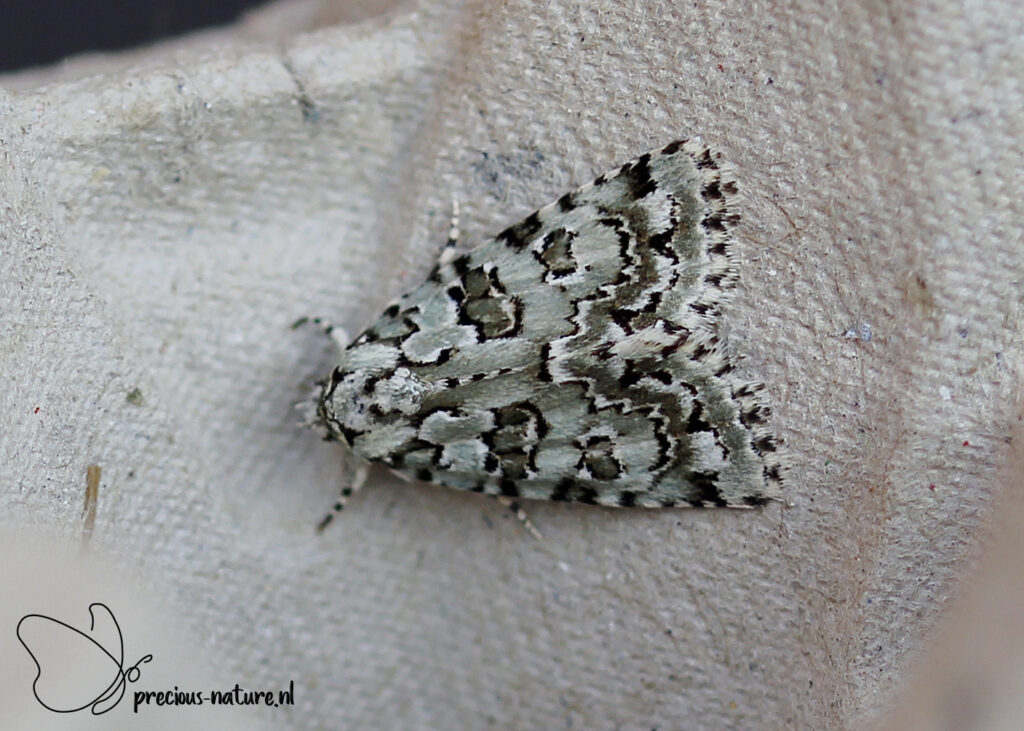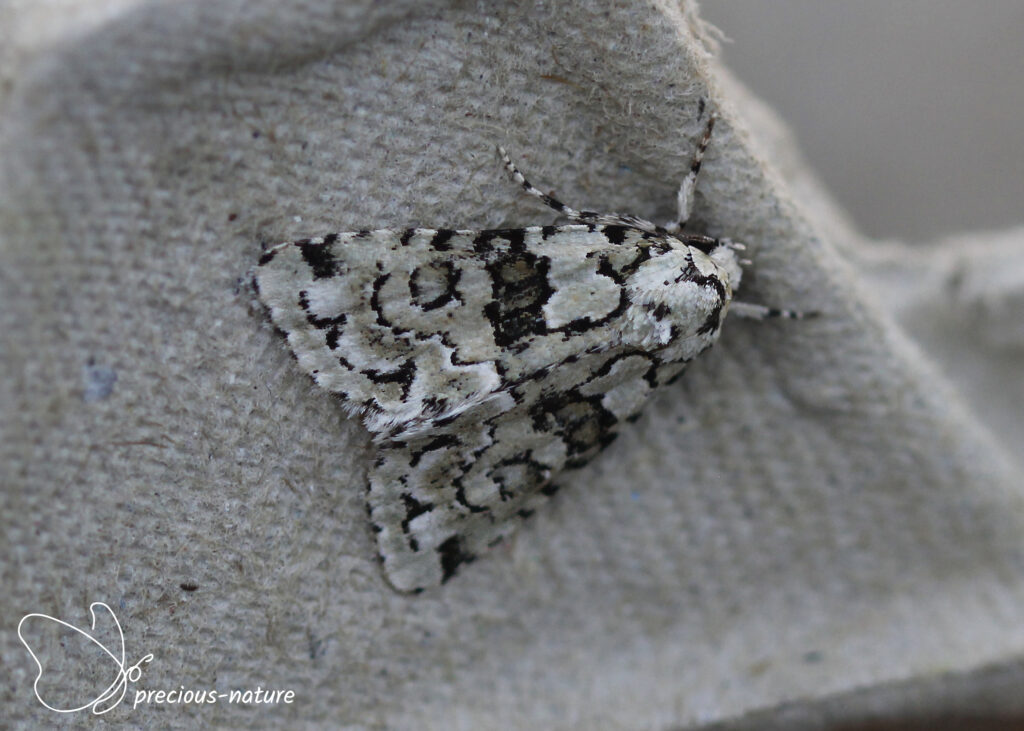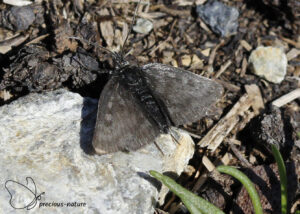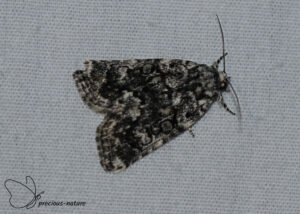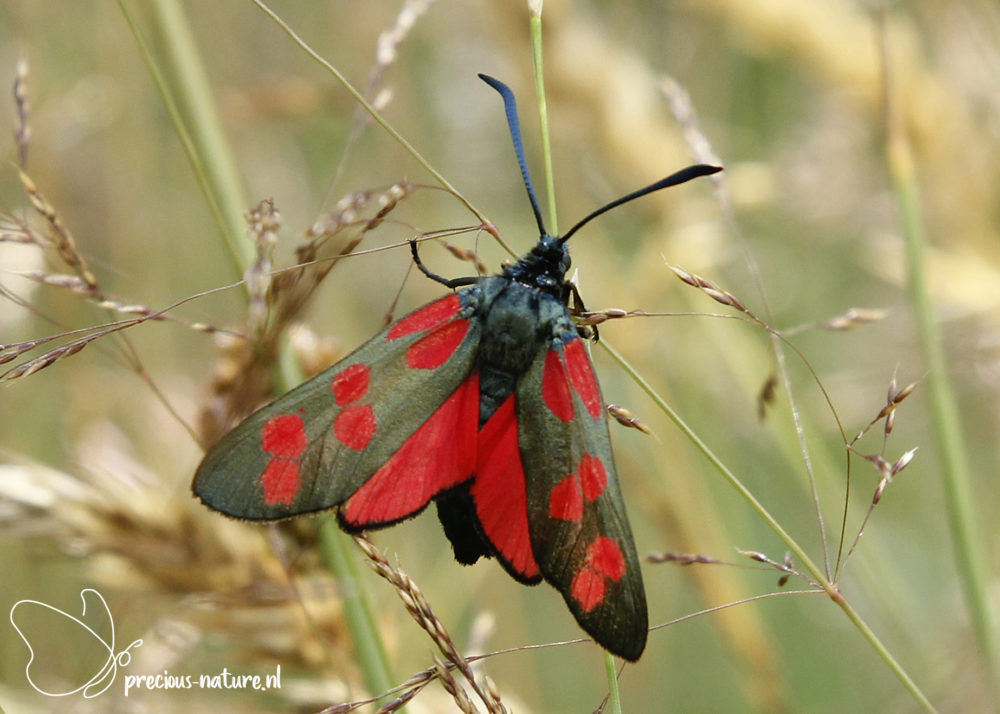Bryophilinae is a subfamily of the Owlet Moths (Noctuidae).
Genus: Bryophila
Marbled Beauty – 2015 (NL)
(NCBI-index: 1.660595)
The Marbled Beauty (Bryophila domestica) has a wing that is light grey to white as a base colour. On the wing, there are green, greyish-green, and sometimes pale yellow spots. The transverse lines and the kidney mark are visible. It can be distinguished from the Marbled Green (Nyctobrya muralis) by the transverse lines that run to the inner edge, which is not the case with the Marbled Green. The Marbled Beauty often rests on walls or roofs during the day and flies in one generation from June to September. The wingspan is 20-25 mm. Host plant: Lichens on stones, roofs, walls, and trees. Dutch name: Lichte korstmosuil. Frisian name: –
Flying period:

Genus: Bryophila
Bryophila galathea – 2025 (IT)
(NCBI-index: –)
No official Dutch and English name is available for this species. This may be because, in Europe, it only seems to occur in France, Italy, Switzerland, and Greece. In France and Italy, it occurs locally in the Maritime Alps at altitudes up to 2200 metres. The species lives mainly in warm valleys with rocky slopes. On the black, greyish-white speckled forewing, the inner transverse line is white and is edged in black on the outside. The outer white transverse line arcs from the inner edge around the kidney mark. Both the kidney mark and the oval mark are outlined in black and clearly visible. The round kidney mark is white on the inside. A broken black line runs along the termen. The flight period is one generation from June to the end of August, and the wingspan is 24-30 mm. Host plant: lichen. Dutch name: –. Frisian name: –
Flying period:

Genus: Cryphia
Tree-lichen Beauty – 2021 (NL)
(NCBI-index: 987910)
A small owl whose ground colour can have different shades of green is the Tree-lichen Beauty (Cryphia algae). There are variants with a dark green colour, as well as those with a mint green colour. The wing base is green, as in the marginal area, especially within the lighter wavy line. The median line is dark, with sometimes a light area containing the large kidney mark. In particular, the area along the outside of the ante-median line and a strip transversely thereto along the trailing edge of the wing are colored dark. The difference from the Marbled Green (Nyctobrya muralis) is the absence of striking dark spots along the leading edge of the forewing. The wingspan is 24-30 mm, and the flight period is in one generation from July to September. Host plant: lichens, especially on trees. Dutch name: Donkergroene korstmosuil. Frisian name: –
Flying period:

Genus: Nyctobrya
Marbled Green – 2017 (NL)
(NCBI-index: 1.870678)
The Marbled Green (Nyctobrya muralis) can occur in different shades of colour. The colour of the wings varies from greenish-white to olive-green and contains a variable pattern of green or sometimes orange-brown spots. The ante-median line does not extend to the inner edge of the wing as does the first transverse line. The latter bends in the direction of the inner transverse line so that between these lines a light spot in the form of a three-leaf clover becomes visible. The black cross lines are generally clearly visible. The flying period is in one generation from June to September, and the wingspan is 27-34 mm. Host plant: Lichens on stones, walls, roofs, and trees. Dutch name: Groene korstmosuil. Frisian name: –
Flying period:


